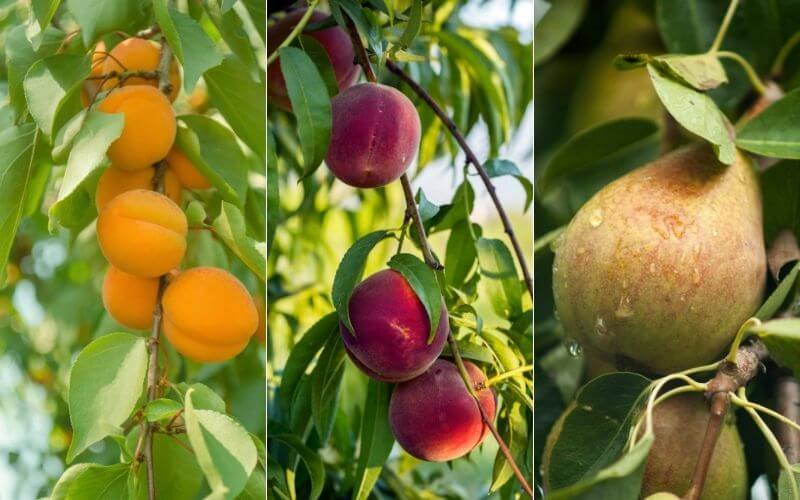
Fruit trees take upwards of seven to 10 years to produce a harvest, and no one wants to wait that long to eat fresh fruit grown at home.
Instead of growing the average tree that takes too long to set fruit, you’ll want to plant some of the fastest growing fruit trees in your backyard orchard.
Why do these trees stand out?
Some of these fruit trees take only two to three years to set and produce fruit. That’s a fraction of the time it takes for other trees to grow fresh fruits. Stop waiting so long and plant some of the quickest fruit trees.
Seed vs. Grafted Trees: Why It Matters
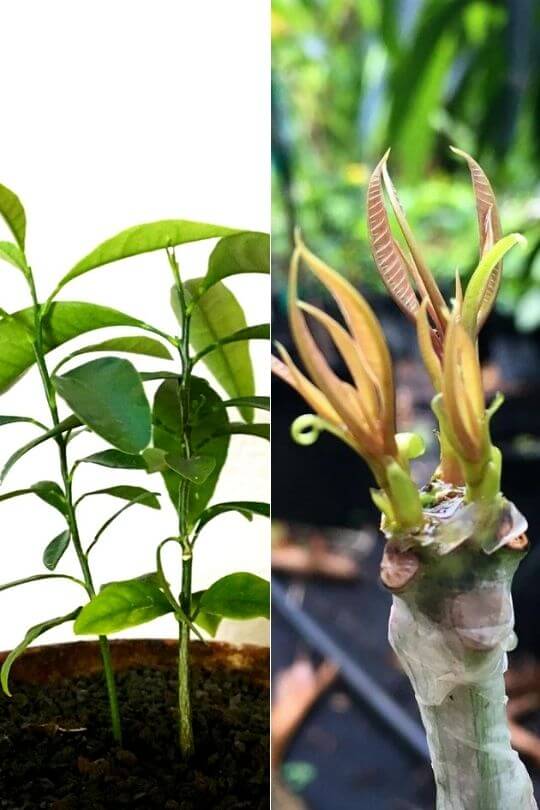
Before I dive into the fastest trees, I wanted to touch on whether or not you should grow fruit tres from seeds or a grafted tree. If you’ve never grown fruit trees, you might be confused by the differences, and it does matter.
If you go to a local nursery, you’ll find grafted fruit trees. They look like much smaller trees, but they are a solid choice because you will get fruit much earlier than if you tried to grow the tree from seeds.
The negative of grafted trees is that they cost more, but you’re shaving years off when you have to wait for a harvest. I think it’s worth the money.
Growing from seeds can take 8-10 years before fruit production, but it’s much cheaper. It’s a practice in patience.
Top 10 Fastest Growing Fruit Trees
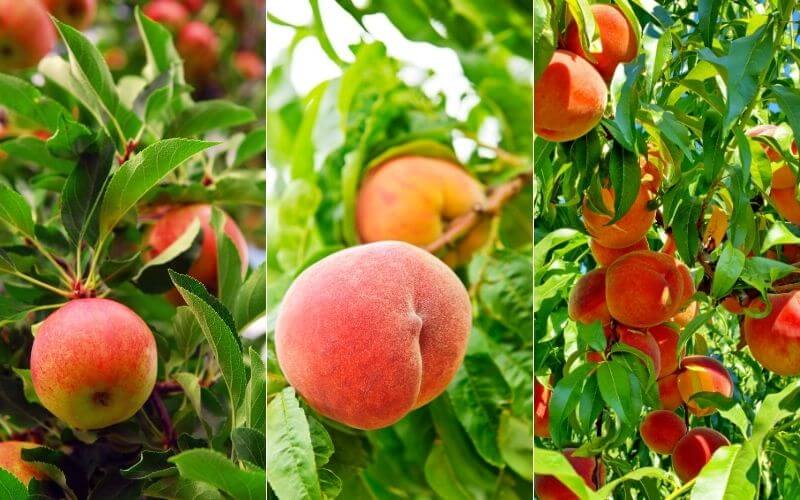
It’s important to remember that each fruit tree has different types. There are dozens of apple tree varieties, and some of them produce faster than others. Also, you’ll need to select a variety that handles your USDA zone and climate the best.
That’s why I highly suggest that you buy fruit trees from a local nursery, if possible. Local nurseries will only carry trees that grow well in your locale.
Fruit trees are an investment into the future, and you don’t want to waste your time growing trees that don’t handle your climate nor produce well where you live.
Here are 10 of the top picks that not only grow fast but taste delicious too.
1. Peach Trees
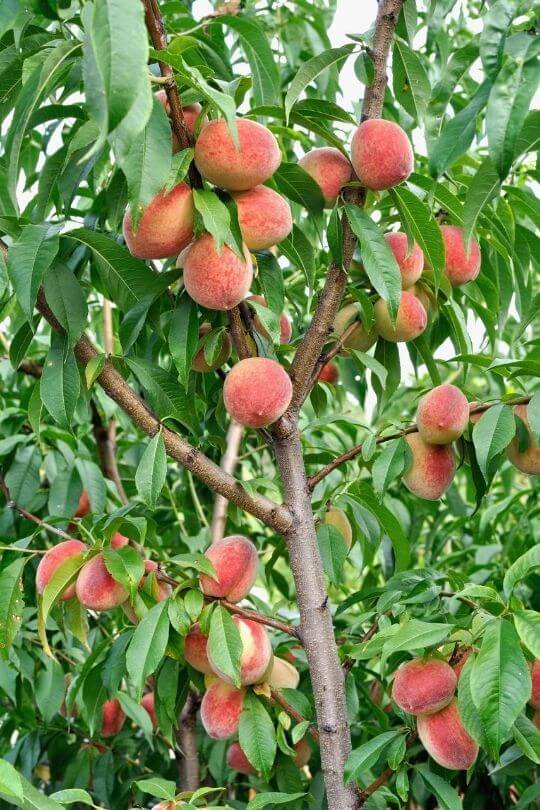
Peach trees are fun to grow and some of the fastest-growing, but they don’t handle growing in an area with a lot of frost or cold temperatures.
I live in zone 5B, and it can be troublesome for a peach harvest if we have an unusually cold winter. Be sure to select peach tree varieties that are cold hardy.
Make sure you select a well-draining area; peach trees don’t handle soggy roots well.
You can’t plant just one peach tree unless you find a self-fertile variety, which is possible, but there are fewer options.
When you select your second peach tree, find one that is different but blooms at the same time. This allows the plants to cross-pollinate.
An average peach tree takes three years to fruit, but poor care will lead to a more extended period before a full harvest. Correctly cared for peach trees harvest faster than neglected ones.
2. Mulberry Trees
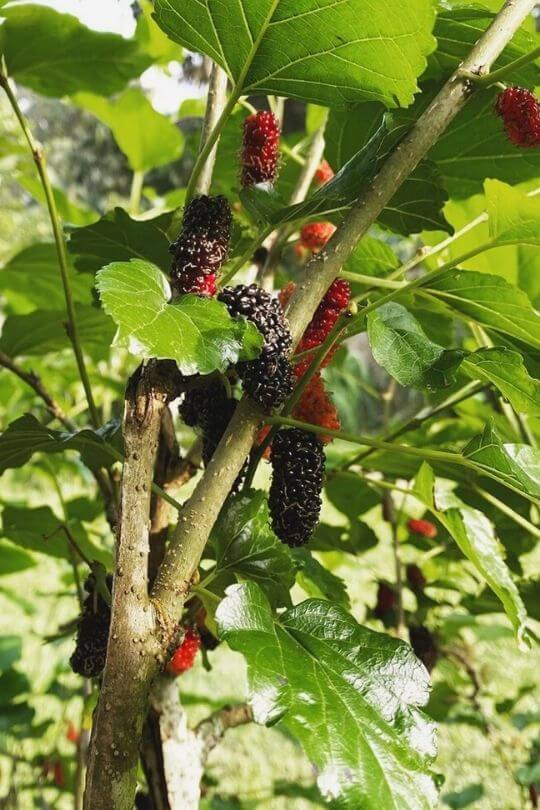
We have a large mulberry tree in our backyard that has been producing berries for decades with no signs of stopping. The only problem we face is that mulberries tend to send up volunteer trees all over the place, and mulberry trees grow fast, typically 2.5 feet per year.
The rate in which they grow is impressive. A grafted mulberry tree can produce in as little as 12 years, continuing to provide for decades.
You do need to realize that these trees are massive, so be sure that you have the space for a mulberry tree. A three-year-old mulberry tree can reach 12 feet tall. Our tree is, at least, 30 feet tall and just as wide.
Mulberry trees are heavy producers. Once established, the tree will yield dozens of cups of berries. One year, my mother-in-law and I made over 100 jars of jam and still didn’t pick all of the berries off the tree.
Unfortunately, mulberries have a bad reputation because of their habit of growing everywhere. Their berries aren’t as juicy and plump as others, but they make a delicious jam.
3. Apple Trees
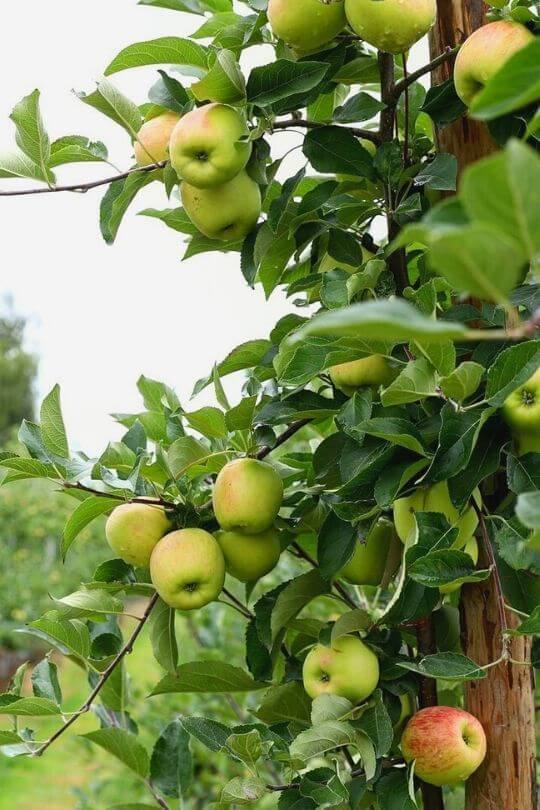
If you live in an area that doesn’t have some cold weather, you won’t be able to grow apple trees because they require chill hours. That indicates how much cold weather is needed for the plant to produce fruit.
If you live in an area with a milder climate, some apple tree varieties require low chill hours. Those are the ones you should go for instead.
Wondering what a chill hour is? When you see chill hours noted on the description of a tree, your fruit tree needs a specific number of days when the temperature is at or below 45℉ in the winter as it enters spring. This leads to the end of dormancy and encourages the plant to flower.
Apple trees also need to cross-pollinate with another apple tree to produce fruits. Otherwise, you’ll end up with a tree that looks great but doesn’t produce any fruits.
4. Citrus Fruit Trees
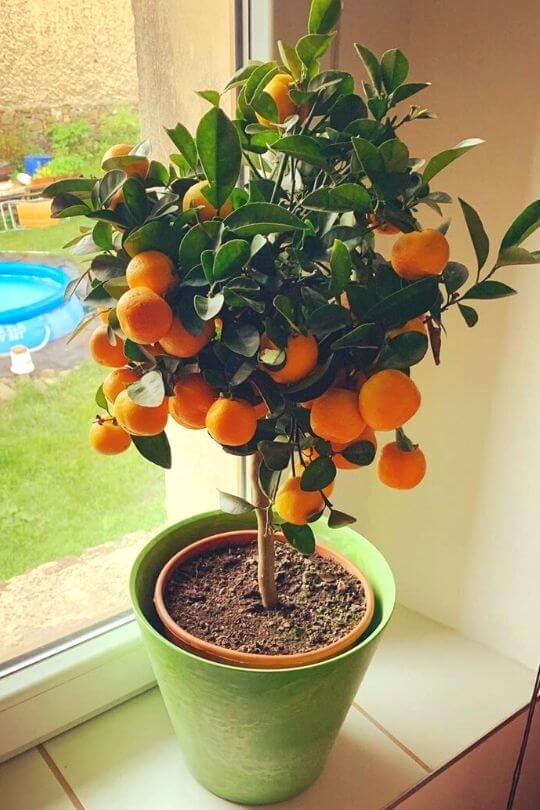
The ability to grow citrus trees depends on your climate and where you live. Most regions don’t have consistent temperatures high enough for you to plant them outside because these trees don’t tolerate any frosts.
That’s why most people don’t consider growing citrus trees, which is a shame because they’re among the fastest-growing fruit trees and prolific in their growth.
Don’t let your location stop you from growing citrus fruits if you want to do so. These trees grow well indoors. Try growing Meyer lemons or Satsuma oranges.
These are two varieties ideal for containers because they’re dwarf trees. You bring them inside each winter when they go dormant.
One of the nice things about growing citrus fruit is that they’re self-pollinating. You don’t need to worry about growing more than one tree. Best of all, citrus trees start to produce fruits the year after you plant them, and a full harvest arrives three years after planting.
5. Apricot Trees
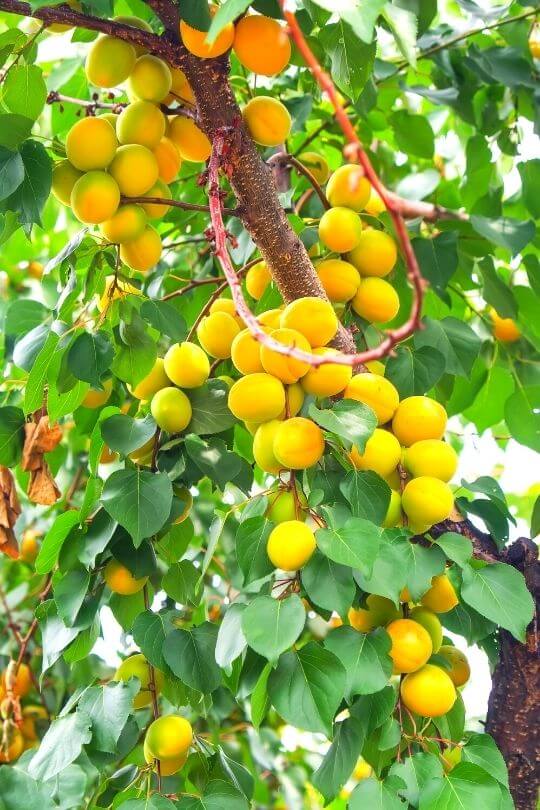
Not all apricot trees are quick growers, but you can look for varieties known for fast growth. Two fast-growing apricot varieties are “Early Golden” and “Moorpark.” On average, it will take three to our years to produce fruit.
Apricots are self-fertile, so you don’t need a pollination partner. That’s such a nice part of growing apricots.
Apricots grow better in colder temperatures; the trees need 700 to 1,0,00 chilling hours to set fruit!
6. Mandarin Fruit Trees
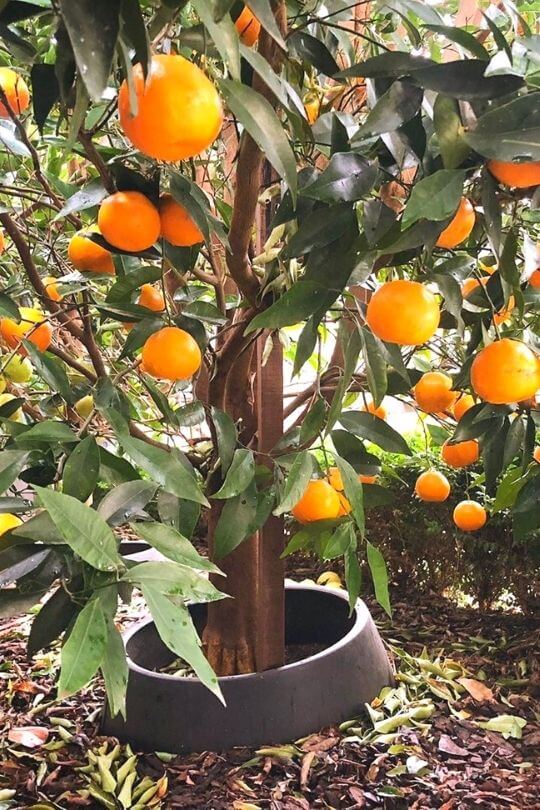
I put mandarins as a separate category because, while they’re a citrus fruit, mandarins are considerably easier to grow than traditional oranges or lemons.
If you’ve never grown any type of citrus, starting with a mandarin tree is a smart idea; their requirements are easier and less maintenance required overall.
If you have kids, mandarins are a popular snack, and you can find dwarf varieties that will grow in your climate.
You still need to bring the trees inside if you have colder weather or any frost. Your home, a heated garage, or heated greenhouse works perfectly.
While it’s possible to grow a mandarin tree from seeds, it’ll take about seven years to see a harvest. It’s better to start with grafted trees, and you’ll see a harvest in two to three years.
If you’re nervous about growing fruit trees, mandarins are an excellent choice. Not only are they easy to grow, but they also don’t require any pruning. That’s a huge advantage, especially if pruning seems intimidating to you.
7. Cherry Trees
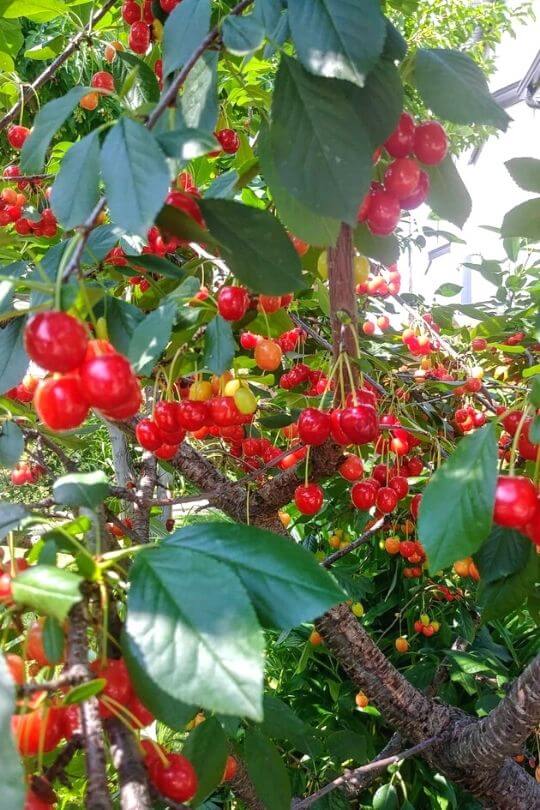
Like apricot trees, not all cherry trees quickly produce a harvest, and these trees are massive.
It’s not abnormal for black cherry trees to grow up to 50 feet tall, so consider the future and make sure you have ample space for their growth. Dwarf trees still need to be planted at least 10 feet apart.
Sweet cherry trees are self-sterile, so you do need to have other varieties of cherries in the same area.
These trees can take up to four years to produce a harvest. Sour cherries produce sooner than sweet cherries, and they take three years for a harvest.
8. Fig Trees
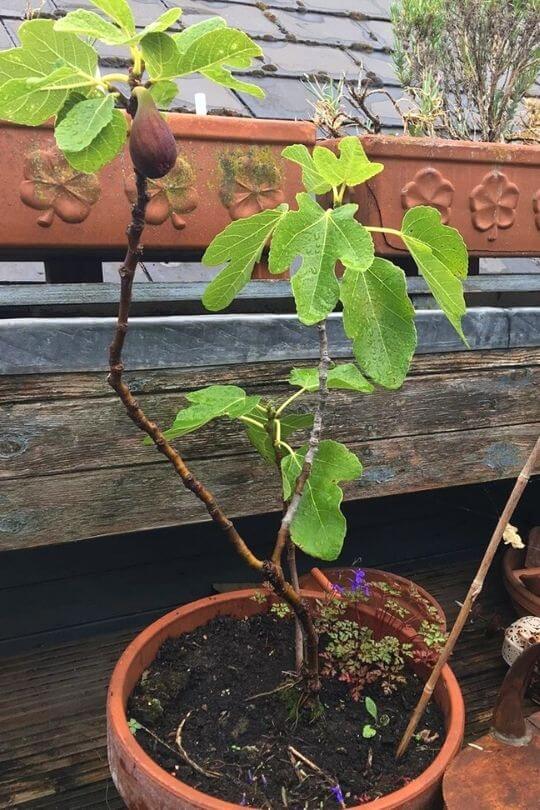
In our previous home, my husband planted a fig tree in front of our porch. I told him that he was insane because our climate doesn’t handle figs well, so I assumed we would never see a harvest.
I was wrong. While we do need to bring it outside as the temperatures turn colder, fig trees produce a harvest quickly and are easy to grow when compared to other types of fruit trees.
Figs prefer warm weather, so keep your tree in a container and bring them inside as the temperatures dip.
Fig trees are self-fertile, so you only need to grow one tree to have a harvest. They don’t flower; you’ll just find fruit on the branches. It only takes two years for fruits to grow and be ready for harvest.
If you do have a fig tree climate, you can plant it outdoors in the ground rather than in a container. In-ground fig trees can reach up to 30 feet tall if left to grow.
You’ll still get a harvest just as fast, but it will continue to grow rapidly over the first five years.
9. Pear Trees
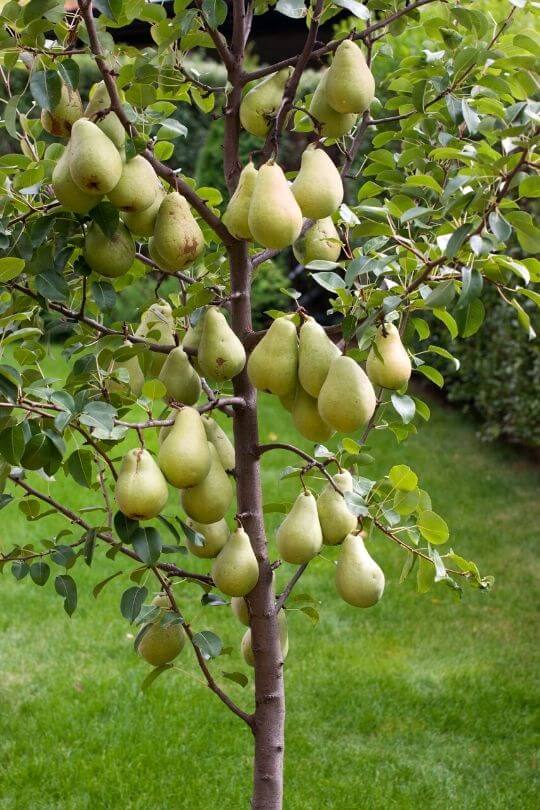
Not all pear trees produce quickly, but if you pick the right one, they will. Pear trees grow well in a range of USDA zones, and just like apple trees, you can select from a wide range of varieties.
Most pear trees reach tall heights, around 20 feet tall. Not only are they large, but pears tend to be easier to grow because they have fewer disease and pest problems. You will need to have two plants for successful pollination.
In general, it can take three to four years for the early pear varieties to flower and bear fruit. Some types take up to 10 years; those are the ones that you want to avoid.
10. Moringa Trees
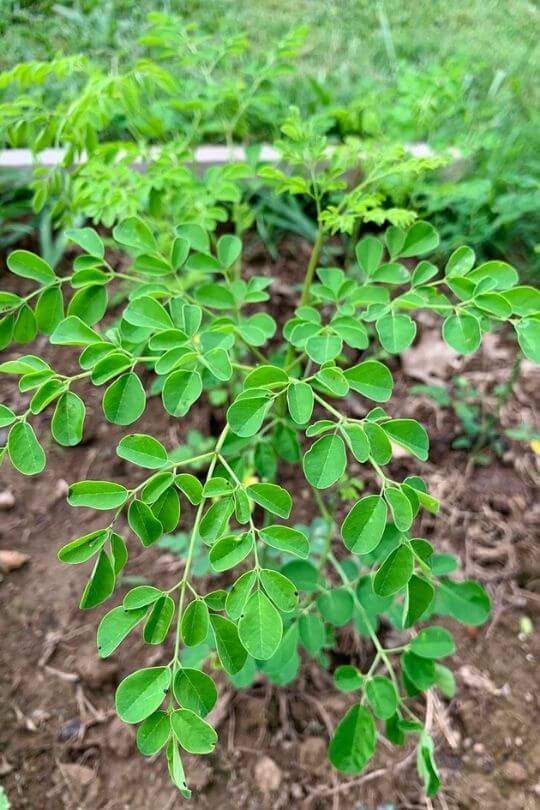
Chances are you’ve never heard of this little tree, but it’s full of nutrients that your family can benefit from having in your backyard. Moringa trees prefer warm climates, but just like citrus fruit trees, you can grow these trees in containers and bring them inside during the winter.
The seed pods, beans, and leaves are edible parts of the moringa trees. You can add the leaves in soups or dehydrate them for a delicious tea blend. The pods are similar to green beans.
The coolest thing about growing moringa is that it’s a super fast-growing fruit tree. It can grow 15-20 feet in a single growing season.
Container grown plants won’t grow as prolifically, but inground plants continue to come back each year so long as the roots don’t freeze.
6 Tips for Growing Fruit Trees in Your Backyard
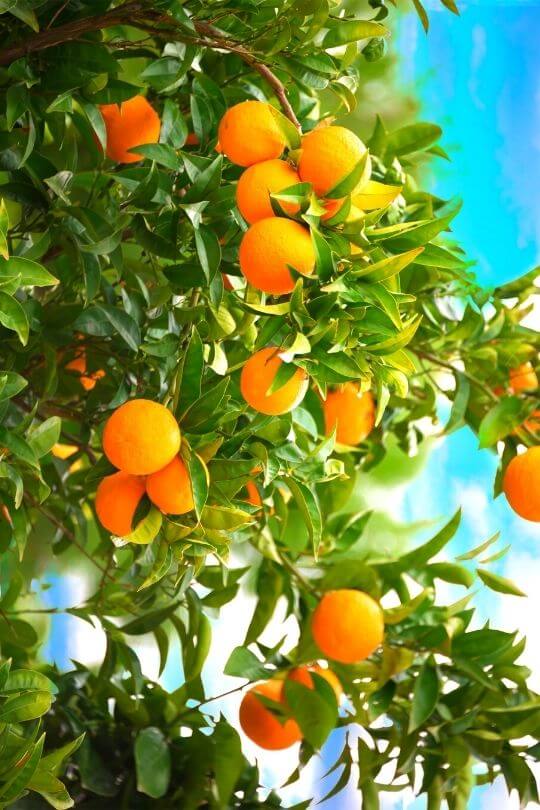
Fruit trees seem intimidating and harder than growing vegetables, but once you try it, you’ll see that they aren’t complicated.
Here are some simple tips for picking the right fruit tree for your property and proper care. I promise it’s easier than you imagined.
1. Pick A Tree With The Right Heat Tolerance
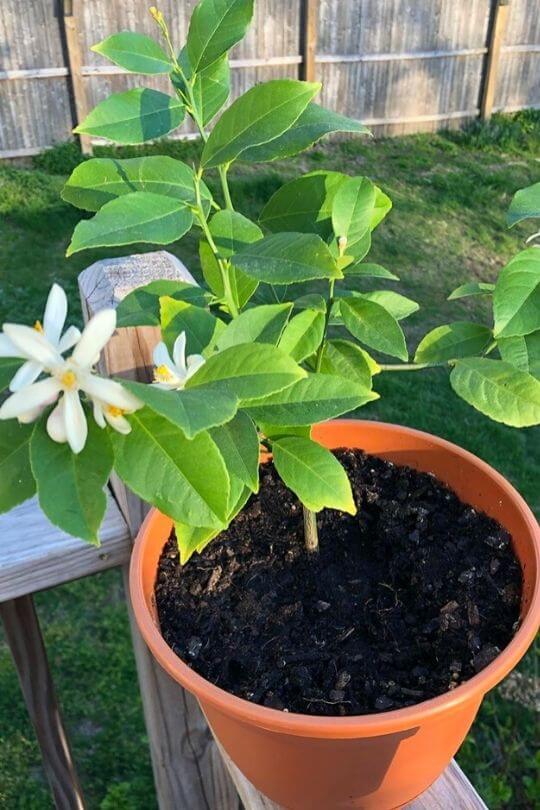
Always match a tree with your region’s climate. Knowing what type of weather a tree prefers will decrease problems in the future.
For example, apples need cold nights and warm days and several days or weeks under a specific temperature to set fruit. Peaches, on the other hand, love long, hot summers.
2. Check Out Pollination Needs
Do you need a second tree for cross-pollination? You don’t need to have two of the same type, but you’ll want two trees.
For example, you can plant two apple trees, but have one red delicious and one yellow delicious. They just need help with pollination.
On the other hand, some fruit trees self-pollinate, which means you don’t need to have more than one tree.
3. Use The Right Container Size
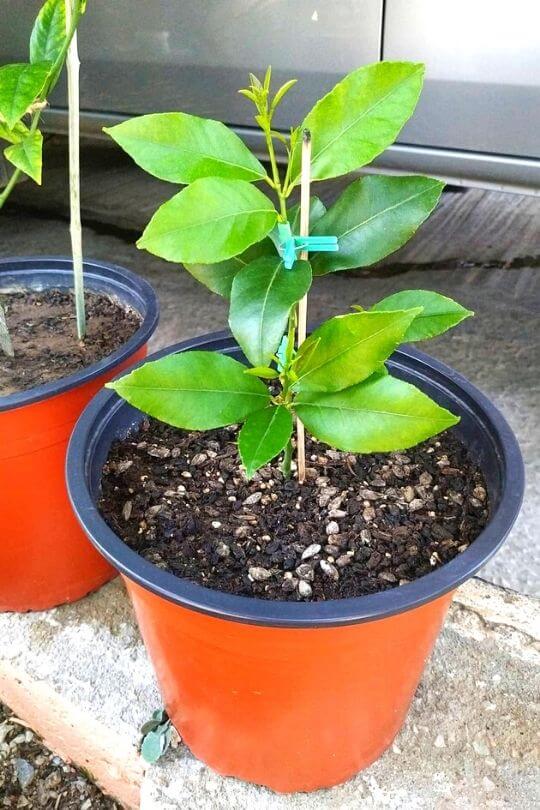
Some dwarf fruit trees grow fine in containers, but you have to pick the right container size.
You’ll need something that is at least 15-20 gallons with plenty of drainage holes at the bottom of the pot.
Some gardeners like to add rocks or gravel at the bottom of the container to help with drainage. You don’t want soggy roots.
4. Dig A Deep Hole
Be sure to ready to directions that come with your fruit tree and dig a large enough hole.
Typically, the hole needs to be 12-18 inches wide and deep at the minimum. Some trees recommend a larger hole.
Aside from the hole depth, but sure that the grafted joint is two inches above the soil line. That’s important to remember.
5. Never Overwater
All plants and trees need and love water, but dwarf trees don’t need to be overwatered.
No plant wants to be overwatered, but so many people don’t understand that overwatering is as detrimental as underwatering.
Watering correctly is crucial, especially if you’re growing trees in containers. All you need to do is water once or twice per week.
During hot, dry weeks throughout the summer, a third watering can be beneficial, but that’s all that is needed.
6. Don’t Forget To Feed It
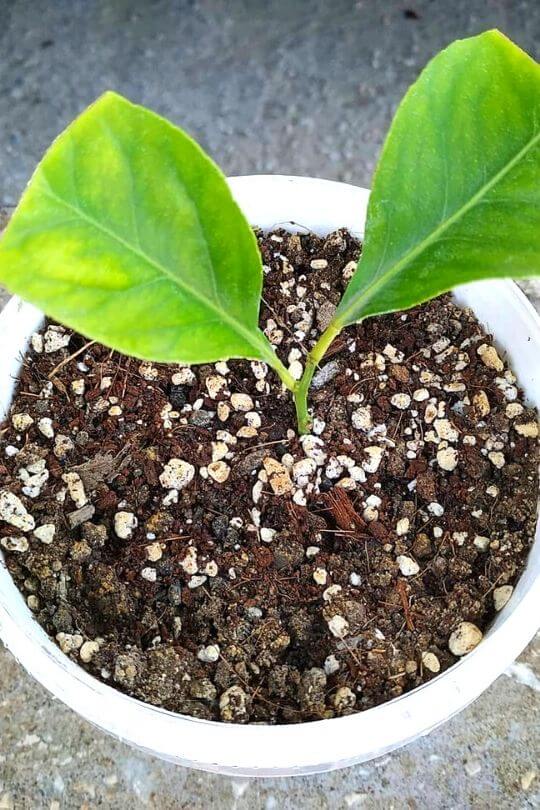
Setting fruit takes a lot out of your fruit tree, so feeding is crucial. It’s a wise practice to add compost around your tree once or twice per water.
You also can buy fruit tree supplements and fertilizers to try. Feeding is especially important if you’re growing trees in containers.
Try Growing Fruit Trees
It might seem intimidating to grow fruit trees, but they’re relatively straightforward. If you pick the fastest-growing fruit trees, you can see a harvest much faster than expected.
Typically, with these ten trees, you’ll have an abundant harvest within three to four years.

Written By
Bethany Hayes
Bethany is a suburban homesteader, growing over half of the vegetables, fruit, and herbs that her family of six needs each year. She raises chickens and homeschools her children. When she isn’t spending time tending to her garden, you can find her reading, crocheting, and canning.

Thank you! Great tips.
Thanks you so much mam
I’ve grown a lot of fruit trees, both indoor and out. One last thing: if you are bringing trees indoors for the winter, examine them for pests while they’re still outside. Most pests can be hosed off, say, your Meyer lemon trees, with a spray of neem oil on the way in. However, I’ve had total losses if I need to try to rince in 0°F. Plus 5000 ladybugs might not be welcome indoors.